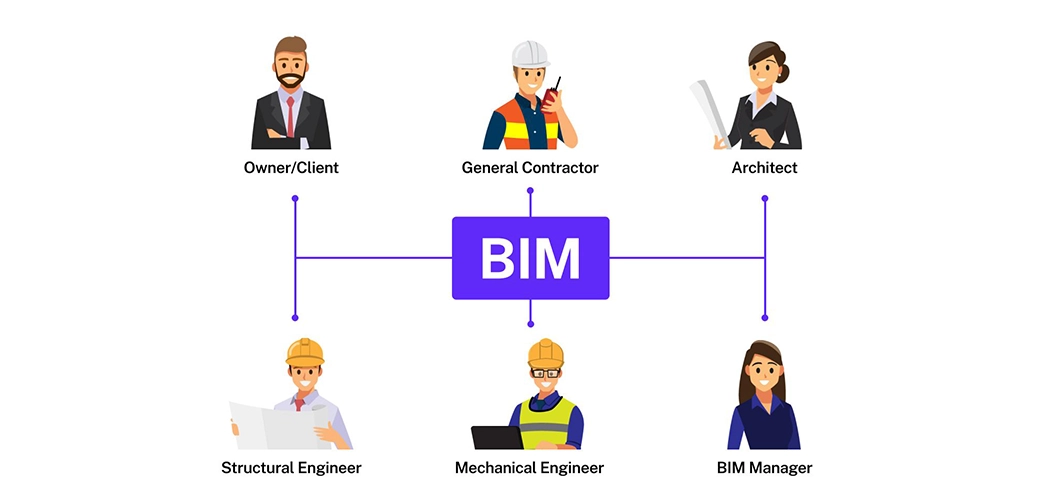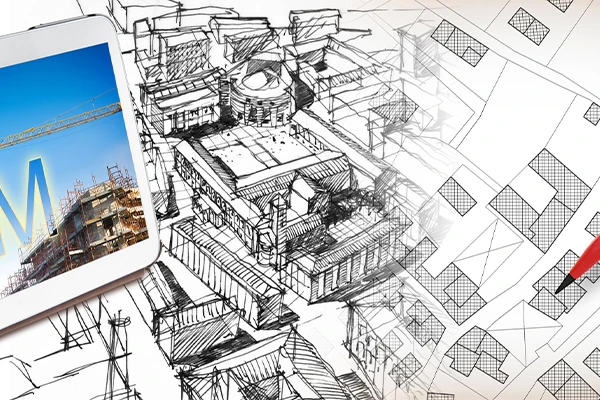
BIM Roles: Who Does What in a BIM Process?
Building Information Modelling (BIM) has proved to be a tool that will continue to transform the world of construction and architecture. BIM acts as a collaborative software to allow the stakeholders to keep every process in check and facilitates sustainable developments. And that’s why it has become a preferred choice of architects, engineers, and individuals associated with the construction industry.
But who makes what BIM is? Let’s explore BIM roles played by different individuals in our blog today!
1- BIM Manager

For each project, there is a dedicated resource responsible for ensuring that all that’s taking place during that project is being done efficiently. For a construction project, a BIM Manager ensures that every process is being worked on with due diligence. Other titles are used for this crucial role as well for example; BIM Project Manager, Construction BIM Manager, BIM Facilitator, etc.
Looking to Boost Profits and Cut Costs with Expert BIM Consultancy?
The BIM Manager oversees the project’s progress at various stages, including effective BIM implementation into a project. In addition, the BIM Manager is also responsible for examining and evaluating the goals of BIM for a specific project.
Other than that, the BIM Manager must also ensure that they are keeping up with the availability of resources, etc. Other roles of the BIM manager also include; increasing productivity, organization-wide training, and transferring valuable knowledge to organizations.
2- BIM Coordinator

Next up is the BIM Coordinator! As it’s quite evident from the title itself, the main responsibility of the BIM Coordinator is to make sure that all the project teams are on the same page. They are also responsible for ensuring that everyone is progressing towards the same goals that were chalked out in the earlier stages. You can hear different titles used for BIM Coordinators such as Lead BIM Coordinator, BIM Discipline Manager, etc.
And here’s a glimpse of a day in the life of a BIM Coordinator:
The BIM Coordinator leads the entire project by overseeing the information-generating process. In addition to that, they are also responsible for coordinating with the various disciplines of the project. But there is something more technical that the BIM Coordinators are supposed to perform and that’s to have hands-on knowledge of everything related to BIM. That can also include educating the project teams or resolving issues that may arise during a project.
3- BIM Modelers

A BIM Modeler is an expert who knows how to utilize the software for the creation, generation, and management of 3D models of infrastructures and buildings. The BIM Modeler is responsible for multiple aspects such as knowing how specific design disciplines work and how they can bring everything together in a harmonious way. BIM Modelers are also known as BIM Authors and BIM Technicians.
Are You Aware of the Blind Spots in Your Digital Growth?
Let’s have a brief look at how BIM Modelers do their job!
Their main job is to create detailed 3D models and then create work sets in various disciplines of a specific project as per the BIM Execution Plan (BEP). In addition, they coordinate design documentation to make the most of BIM. BIM Modelers must also interact with other project teams in case of implementing design & model changes.
4- BIM Architects and Designers

The roles of architects and designers are crucial for a construction project. They not only bring life to a certain idea but they also make sure that the models truly reflect the vision behind that idea. These stakeholders utilize BIM to create designs and with time, update them if need be.
In addition to that, other roles of BIM Architects and Designers include collaborating with various disciplines in a project and then developing comprehensive designs. When BIM Architects and Designers collaborate with the stakeholders, they can guarantee a project’s successful delivery.
5- BIM Construction Managers

BIM software is not only restricted to collaboration, modeling, and creating designs but it also covers the construction process. Here is how: when a 3D model has been developed, the BIM Construction Managers use the project for various stages such as planning, scheduling, and collaborating with other disciplines.
BIM Construction Managers are also responsible for analyzing the model to determine timelines and budgets. Their role also includes evaluating risks and contributing towards proactive risk management promptly.
6- BIM Facility Managers (FM)

Like other disciplines, Facility Managers play an important role in delivering a successful construction project. Their BIM roles and responsibilities include the maintenance and operations of an infrastructure or a building. Thanks to BIM, access to improved and accurate data is all that is required by the Facility Managers to ensure that they are fulfilling their job proactively and efficiently.

Before we conclude our blog today, allow us to mention that there is no doubt about the fact that whenever diverse teams work on a project, their end goal is to achieve their desired results. But that can only happen when all stakeholders understand their roles and the complexities of a specific project. In addition, they must also be prepared for all sorts of risks that may arise so that they can resolve them early in the project. Anyone and everyone who is associated with the Architecture, Engineering, and Construction (AEC) sectors must allow themselves and their teams to enjoy the perks of technological advancement.
Also, in the constantly changing world of construction and architecture, BIM must not only be incorporated for effective collaboration within teams but should also be utilized for informed decision-making. That can be done by understanding how various teams contribute towards a successful project delivery while working in a BIM framework. As a result, we will be able to develop sustainable, greener environments for us and future generations. And we are sure that’s something everyone would very much like to see, right?!
That said, we are sure that the information we have shared in the blog will help you make the most of BIM services for your personal and commercial projects.


2 Responses